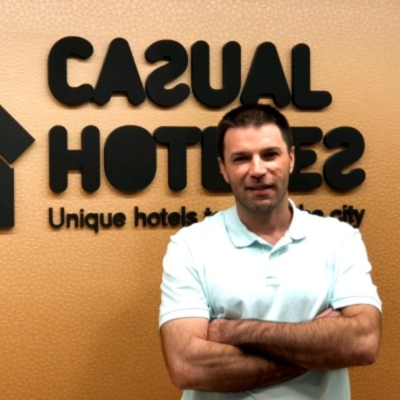Define Your Hotel’s Strategy by Distribution Channels
Travelers pay different rates for the same room depending on a variety of factors, such as the time of reservation, the demand, the channel or even an important event happening in the area. As a result, hotels gradually change the price to maximize yield.
Hotel revenue can fluctuate over time through factors such as demand, occupancy rate of the competition, weather conditions, political stability, or currency devaluation. Revenue managers oversee that their hotels work at full occupancy throughout the year. An empty room implies an additional cost for hotels. We present a series of possibilities of how using yield management by channel can help you define your hotel’s distribution strategy:
-
Working under demand forecast. Yield management is based on the principle of supply and demand. In periods of high occupancy, revenue managers use price elasticity to raise room rates so as to maximize revenue. On the other hand, when room demand is on the negative side, prices also tend to fall. This helps attract many customers through actions such as prices with special discounts. Working with advance booking and being able to rearrange your business according to changes, without very aggressive actions, generates stability in your rates and offers.
-
Working with an adequate mix of online channels. The receipts generated by OTAs usually bring unpleasant news. The dependency on channels that are beyond the control of the hotelier generates uncomfortable stress. Knowing how to balance the mix based on a distribution of indirect and direct bookings is key to avoid suffering a dependence overridden by a partner that cannibalizes hotels through tools such as their own platforms or even Google AdWords.
-
Direct Bookings vs. OTAs. By reinforcing their own booking platforms, hoteliers can enjoy direct revenue. Nonetheless, it’s true that, in order to boost direct bookings, hotels have to adopt a series of approaches and strategies, that include offering better rates on their hotel’s website, having a website optimized for mobile phones, multi-language booking engines, SEO strategy, etc. Since this approach is not free, it’s recommended to analyze the cost associated with direct bookings and ensure that costs aren’t higher than indirect bookings.
-
Having an inventory that can be updated in real time. One of the main concerns of revenue managers is to have an inventory that is updated with every channel their hotel works with. Having a Channel Manager will avoid overbooking problems, will adjust rates and availabilities per channel and will also allow automating rules regarding demand situations. Moreover, if hotels add an RMS (Revenue Management System), they’ll have an automated intelligence module in the distribution service.
-
Adapting the distribution to the type of traveler. The technology and the navigation of the traveler, through online portals, provides hotels with very important knowledge about demand. Through this situation regarding information generation, hoteliers can better understand consumer behavior. Determining patterns of search or consumption will make it easier when developing tourism products. This knowledge improves inventory management, as well as to define the characteristics of the offer, which has already been done intuitively years ago. Planning a hotel management for a traveler coming on vacation or for a business trip is completely different. This is why it’s necessary to identify the needs of each type of client and to adapt the characteristics of the hotel accordingly.
At this point, it’s difficult to elucidate if either early-booking or last-minute reservations are being imposed when it comes to uniting forces. What is clear is that aggressive early-booking strategies are trying to work with foresight and that there are travelers who feel comfortable benefitting from last-minute bargains. On the other hand, there’s a fragmented scenario of highly segmented channels. Nonetheless, it also includes very consolidated players. A very broad panorama, with many alternatives as well as needs of modernization and differentiation through personalized products.

















